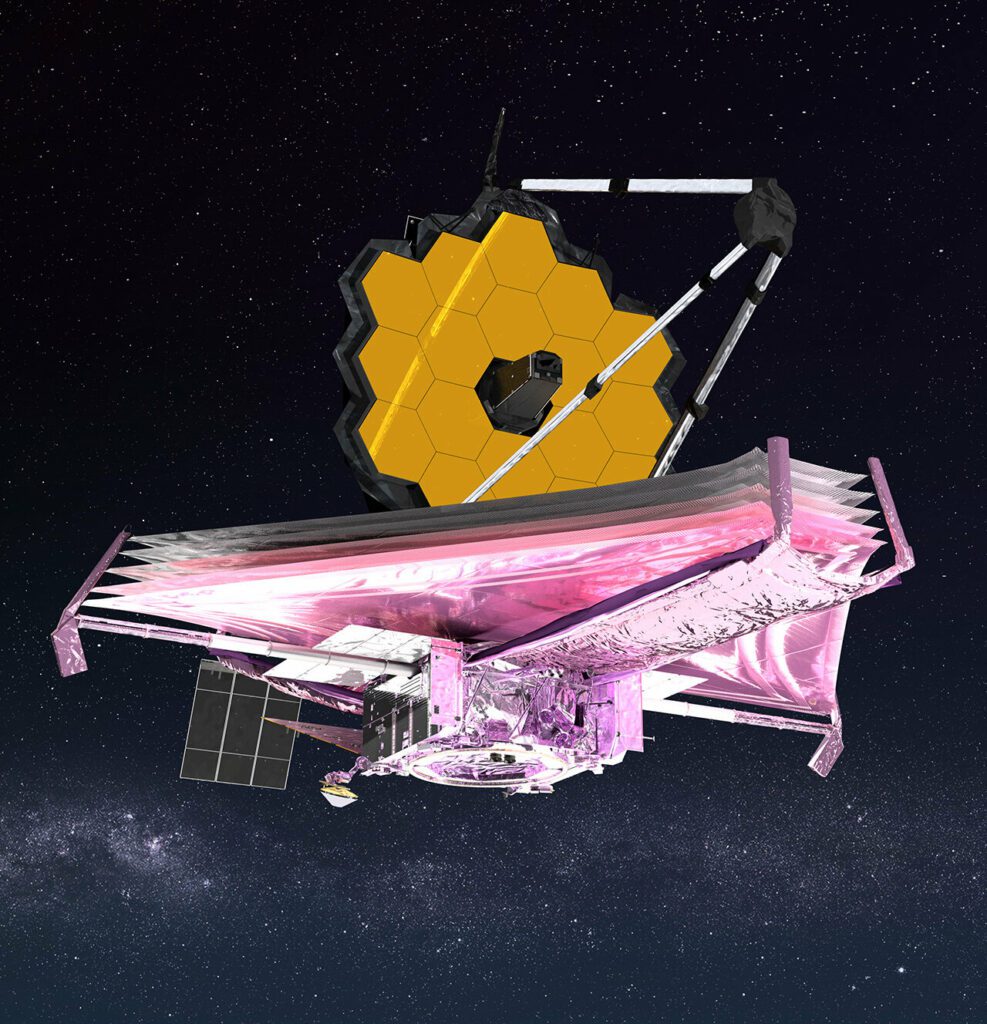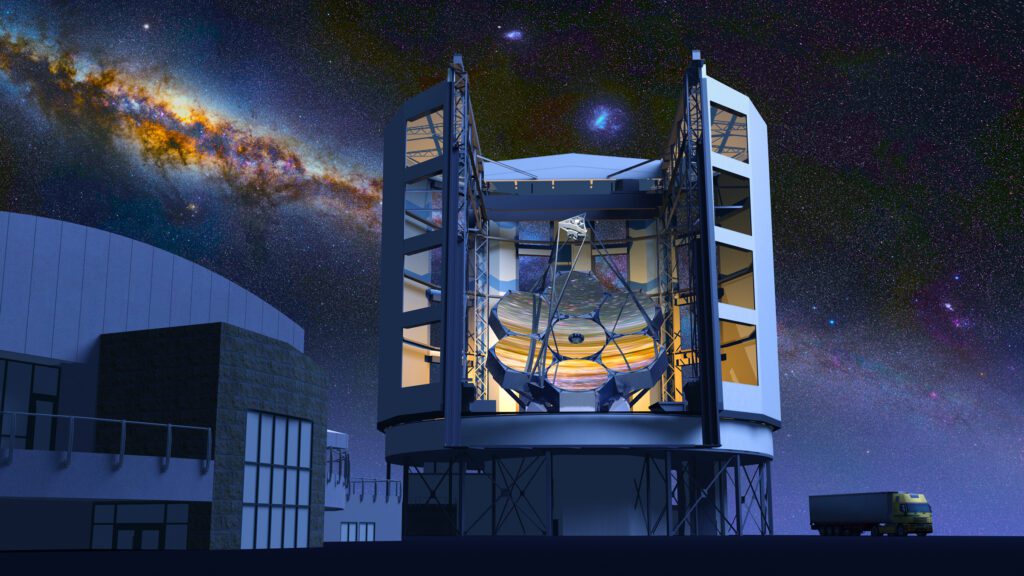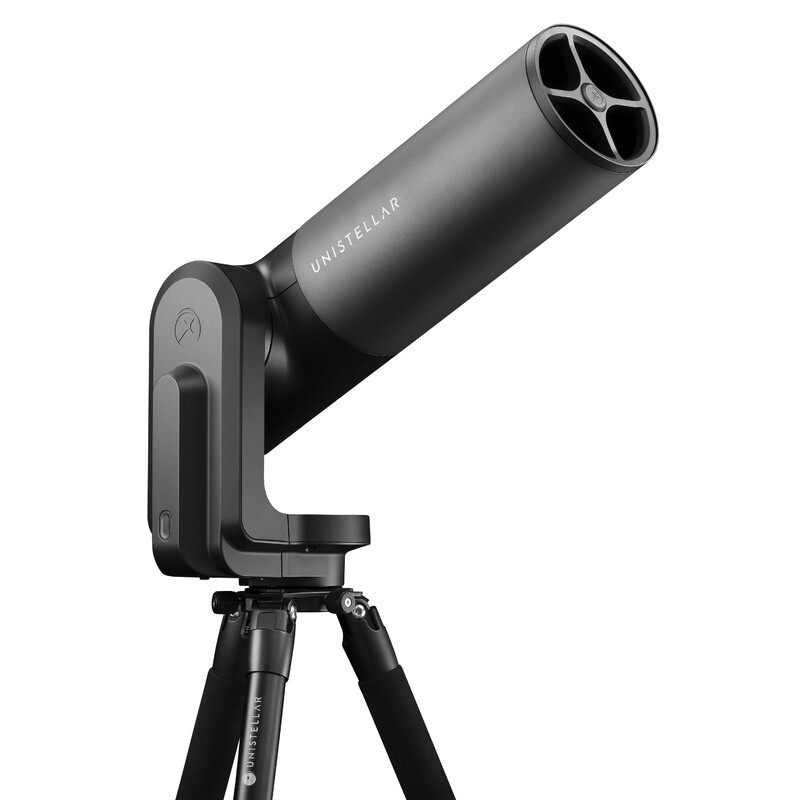The Future of Telescopes
In the realm of astronomy, telescopes serve as our eyes to the universe, allowing us to peer into the depths of space and time. From Galileo’s rudimentary telescope to the Hubble Space Telescope’s awe-inspiring images, telescopic technology has come a long way. Yet, as we stand on the cusp of a new era in space exploration and scientific discovery, the limitations of current telescope technology become increasingly apparent.
The need for advancements and innovations in telescope design is not just a desire but a necessity. As we aim to answer some of the most perplexing questions about the universe. Such as the nature of dark matter, the possibility of life on exoplanets, and the origins of cosmic phenomena—we require telescopes with greater sensitivity, higher resolution, and more advanced features.
This article will delve into the future of telescopes. Exploring the groundbreaking innovations on the horizon that promise to revolutionize our understanding of the cosmos. From next-generation ground-based observatories to smart telescopes equipped with artificial intelligence, the future is bright for both amateur stargazers and professional astronomers alike. So, let’s embark on this exciting journey to discover what the future holds for telescopic technology.
The James Webb Space Telescope: A Benchmark

The James Webb Space Telescope (JWST), often hailed as the successor to the Hubble Space Telescope, serves as a benchmark for what modern telescopic technology can achieve. The JWST promises to revolutionize our understanding of the universe in ways previously unimaginable.
Capabilities
- Infrared Sensitivity. Unlike its predecessor, the Hubble, which mainly observes in visible and ultraviolet light, the JWST is optimized for infrared observations. This allows it to peer through dust clouds and observe distant objects. Providing a clearer view of the universe’s early days.
- Higher Resolution. With a primary mirror measuring 6.5 meters in diameter. More than two and a half times the size of Hubble’s—JWST will capture images with unprecedented detail.
- Advanced Instruments. Equipped with state-of-the-art instruments like the Near Infrared Camera (NIRCam), Mid-Infrared Instrument (MIRI), and Near Infrared Spectrograph (NIRSpec), the JWST can perform a variety of scientific tasks. From imaging exoplanets to studying the chemical composition of distant galaxies.
- Deep Space Exploration. The telescope’s position at the second Lagrange point (L2) allows for more stable observations and the ability to look further into space than ever before.
Setting the Stage for Future Innovations
The JWST serves as a point of reference for what telescopes of the future need to achieve and surpass. Its capabilities in infrared astronomy, high-resolution imaging, and deep-space exploration set a high standard for the next generation of telescopes. As we look to the future, the innovations on the horizon aim to build upon this foundation. Pushing the boundaries of what is possible in observational astronomy.
In the following sections, we will explore some of these groundbreaking technologies and designs that promise to take telescope capabilities to new heights, further expanding our understanding of the universe.
The New Era of Ground-Based Telescopes
As we venture into the next decade, ground-based telescopes are also undergoing significant advancements. Promising to redefine what we can observe from the Earth’s surface. Two such monumental projects are the Thirty Meter Telescope (TMT) and the Extremely Large Telescope (ELT). Each with its own set of groundbreaking capabilities and scientific goals.
The Thirty Meter Telescope (TMT)
- The TMT is planned to be one of the world’s largest ground-based observatories. It aims to revolutionize our understanding of the universe by capturing images with unprecedented detail.
- Capabilities:
- Thirty-Meter Mirror: As the name suggests, the TMT will have a 30-meter primary mirror, allowing for extremely high-resolution imaging.
- Adaptive Optics: Advanced adaptive optics systems will correct for atmospheric distortion, providing clearer images.
- Multi-Object Spectroscopy. The telescope will be capable of studying multiple objects in the sky simultaneously. Making it highly efficient for large-scale surveys.
- Scientific Goals:
- Exoplanet Studies: The TMT aims to directly image exoplanets, providing insights into their atmospheres and potential habitability.
- Cosmology: The telescope will be used to study the large-scale structure of the universe. Helping to answer fundamental questions about dark matter and dark energy.
The Extremely Large Telescope (ELT)
- ELT is another behemoth in the making, planned to have a staggering 39-meter primary mirror. It is being developed by the European Southern Observatory (ESO) and aims to be the “world’s biggest eye on the sky.”
- Capabilities:
- Giant Mirror: The 39-meter primary mirror will be the largest for any optical/infrared telescope, offering unparalleled light-collecting power.
- High-Resolution Spectroscopy. The ELT will be equipped with instruments capable of dissecting light into its component colors to an extraordinary degree. Allowing for detailed chemical analyses of celestial objects.
- Scientific Goals:
- Black Hole Imaging: One of the ELT’s primary missions is to directly image the event horizon of black holes.
- Galactic Evolution: The telescope will study the formation and evolution of galaxies, providing a deeper understanding of the universe’s history.
Both the TMT and the ELT represent significant leaps in ground-based astronomy and promise to complement space-based observatories like the JWST. Their advanced capabilities will open new avenues in various fields of astronomy, from planetary science to cosmology.
The Promise of the Giant Magellan Telescope

As we look forward to the future of ground-based astronomy, another monumental project that stands out is the Giant Magellan Telescope (GMT). This telescope promises to be a game-changer in the field. Offering unique features and capabilities that will significantly contribute to our understanding of the universe.
Features and Capabilities
- Unique Mirror Design. The GMT will feature seven of the largest monolith mirrors ever made, each 8.4 meters in diameter. Arranged in a flower-like pattern. This unique design will provide an effective aperture of 24.5 meters.
- Adaptive Optics. Like its contemporaries, the GMT will also employ state-of-the-art adaptive optics to correct for atmospheric interference. Delivering images that are 10 times sharper than those from the Hubble Space Telescope.
- Wide Field of View. The telescope is designed to have an exceptionally wide field of view. Allowing it to capture large swaths of the sky in a single image.
- High-Resolution Spectroscopy. The GMT will be equipped with advanced spectrographs. Enabling it to analyze the chemical composition, temperature, density, mass, and relative motion of astronomical objects.
Scientific Goals
- Studying Exoplanets: One of the primary missions of the GMT is to study exoplanets in great detail. It aims to characterize their atmospheres, study their potential habitability, and even search for signs of life.
- Galactic Evolution: The GMT will delve deep into the mysteries of how galaxies form and evolve over time. It will study the distribution of dark matter in the universe and help us understand the role it plays in galactic evolution.
- Cosmic Dawn. The telescope aims to look back in time to study the first stars and galaxies that formed after the Big Bang. Providing insights into the early universe.
The Giant Magellan Telescope, with its unique design and ambitious scientific goals, is poised to be a cornerstone in the next generation of mega-telescopes. Its capabilities will not only complement those of other ground-based telescopes like the TMT and the ELT but also add a new dimension to our quest for understanding the cosmos.
The Legacy Survey of Space and Time (LSST)
In the realm of future telescope innovations, the Legacy Survey of Space and Time (LSST) stands as a unique endeavor that aims to revolutionize our understanding of the universe. Unlike traditional telescopes that focus on narrow sections of the sky, the LSST is designed to capture a broad panorama,. Offering a more comprehensive view of the cosmos.
Unique Approach in Sky Survey
- Wide Panorama: The LSST is engineered to scan the entire visible sky every few nights. This wide-field approach will allow it to map billions of objects and create a time-lapse movie of the sky. Providing dynamic data that can be used to study everything from solar system objects to the structure of the universe.
- Rapid Data Collection. The telescope is designed to move quickly between images, allowing it to cover the sky in a more efficient manner. This is crucial for detecting transient events, such as supernovae or asteroid movements.
- Deep Surveys: The LSST will not just skim the surface but will conduct deep surveys to capture faint astronomical objects. This will be invaluable for studies related to dark matter, dark energy, and the early universe.
Technological Marvel: The 3.2-Billion-Pixel Camera
- Unprecedented Resolution. One of the most astonishing features of the LSST is its 3.2-billion-pixel digital camera. The largest digital camera ever constructed for astronomical research.
- Data Handling. The camera is expected to produce 15 terabytes of data per night, requiring advanced data processing and storage solutions.
- Spectral Range. The camera is designed to capture images across a wide range of wavelengths. From ultraviolet to near-infrared, providing a more complete picture of the universe.
The Legacy Survey of Space and Time promises to be a groundbreaking project in the field of astronomy. Its unique approach and technological marvels like the 3.2-billion-pixel camera set it apart as a future cornerstone in our quest to understand the universe. With its wide panorama and deep surveys, the LSST is poised to make significant contributions to various scientific domains, from planetary science to cosmology.
Technological Innovations
As we look towards the future of telescopes, it’s not just the size and scale that are evolving. Technological innovations are playing a pivotal role in shaping what’s possible. From the materials used in construction to the software that controls these astronomical behemoths.
New Materials and Designs
- High-Quality Membrane Mirrors: Traditional glass mirrors are giving way to more advanced materials. High-quality membrane mirrors, for instance, offer the advantage of being lighter and more adaptable, which is crucial for space telescopes. These mirrors can be adjusted in real-time, allowing for more precise observations.
- Carbon Fiber Structures. The use of carbon fiber in telescope construction offers a lightweight yet sturdy alternative to traditional materials. Reducing the overall weight and thereby the cost of launching telescopes into space.
- Adaptive Optics. This technology allows ground-based telescopes to adjust to atmospheric distortions in real-time. Providing clearer images that rival those from space telescopes.
The Role of Software and Artificial Intelligence
- Automated Observations: Advanced software algorithms are enabling telescopes to operate autonomously. This is particularly useful for capturing transient events that require quick reactions, such as supernovae or gamma-ray bursts.
- Data Analysis: The sheer volume of data generated by modern telescopes is staggering. Artificial Intelligence (AI) and machine learning algorithms are increasingly being used to sift through this data, identifying patterns and anomalies that would be impossible for humans to spot in a reasonable time frame.
- Smart Telescopes: The integration of AI into telescope systems is leading to the development of “smart telescopes.” These telescopes can make real-time decisions about what to observe based on the data they are currently collecting, optimizing their time for the most scientifically valuable observations.
- Virtual Reality (VR) and Augmented Reality (AR): These technologies are being integrated into the observational process, allowing astronomers and even amateur stargazers to immerse themselves in a more interactive exploration of the universe.
The technological innovations in materials, software, and data analysis are setting the stage for a new era in astronomy. As we integrate these advancements into the next generation of telescopes, the possibilities for discovery are virtually limitless.
The Rise of Smart Telescopes

The advent of smart telescopes is a game-changer, not just for professional astronomers but also for amateur stargazers. These advanced telescopes are equipped with intelligent systems that make sky-watching more accessible, efficient, and educational. Here’s how smart telescopes are revolutionizing the field of amateur astronomy.
Features of Smart Telescopes
- Automated Tracking: One of the most significant features of smart telescopes is their ability to automatically track celestial objects. Once you input your target, the telescope will align itself and keep the object in view, freeing you from manual adjustments.
- User-Friendly Interfaces: Smart telescopes often come with intuitive touch-screen controls or can be operated via a smartphone app, making them extremely user-friendly.
- Built-in Databases: These telescopes come with pre-loaded databases of celestial objects, making it easier for beginners to find interesting targets.
- Live Streaming and Social Sharing: Some smart telescopes allow you to live-stream your observations or even share them on social media, making astronomy more interactive and communal.
- Remote Operation: Advanced models can be controlled remotely, allowing you to observe the night sky from the comfort of your home or even collaborate with others in different locations.
Benefits of Smart Telescopes
- Ease of Use: The automated features and user-friendly interfaces make smart telescopes ideal for beginners. You don’t need to be an expert to start exploring the universe.
- Enhanced Educational Value: With built-in databases and the ability to interface with educational apps, smart telescopes serve as excellent educational tools for students and amateur astronomers.
- Time Efficiency: The automation saves a lot of time that might otherwise be spent on setup and manual tracking, allowing you more time for actual observation.
- Collaborative Exploration: The connectivity features, including remote operation and social sharing, open up new possibilities for collaborative sky-watching and research.
Smart telescopes are democratizing the field of astronomy, making it easier than ever for people of all skill levels to explore the cosmos. With their intelligent features and benefits, these telescopes are setting a new standard for what amateur astronomers can achieve.
Challenges and Controversies
While the advancements in telescope technology promise a new era of astronomical discovery, they also come with their own set of challenges and controversies. From ethical concerns to logistical hurdles, here’s a look at some of the issues that the astronomical community is grappling with.
Ethical Concerns: The Case of Hawaii
- Cultural Sensitivity: One of the most prominent ethical issues is the placement of telescopes in culturally sensitive locations, such as Mauna Kea in Hawaii. For native Hawaiians, Mauna Kea is a sacred site, and the construction of telescopes there has led to protests and legal battles.
- Environmental Impact: Besides cultural concerns, there are also environmental implications. The construction and operation of large telescopes can have a significant impact on local ecosystems.
Logistical Challenges
- Funding: Building state-of-the-art telescopes requires substantial financial investment. Securing funding and managing costs are significant challenges.
- International Collaboration: Many of these projects involve collaboration between countries, which can be complicated by geopolitical tensions or differing scientific priorities.
Technological Hurdles
- Radio Noise: For space-based telescopes, radio noise from Earth can be a significant issue. This noise can interfere with the sensitive instruments on board, affecting the quality of data collected.
- Maintenance: The more advanced the telescope, the more complex its maintenance needs. For space-based telescopes, repairs are not as straightforward as they are for ground-based observatories.
Regulatory Issues
- Space Traffic: As the number of satellites and other objects in space increases, so does the risk of collision. Regulatory frameworks for space traffic management are still in their infancy.
- Data Privacy: With telescopes capable of capturing high-resolution images, there are potential concerns about privacy and the ethical use of data.
These challenges and controversies highlight the complexity of advancing telescope technology. While the potential for groundbreaking discoveries is immense, the path to achieving them is fraught with ethical, logistical, and technological hurdles that the astronomical community must navigate carefully.
The Future Landscape
As we look toward the horizon, the future of telescope technology is incredibly promising, with a slew of upcoming projects that could redefine our understanding of the universe. These advancements are not just incremental; they have the potential to lead to groundbreaking discoveries and scientific breakthroughs that could answer some of the most perplexing questions in astronomy.
Upcoming Projects
- Next-Generation Space Telescopes: Following the James Webb Space Telescope, plans are already underway for even more advanced space-based observatories that could look further into the universe than ever before.
- Adaptive Optics Systems: Ground-based telescopes are expected to incorporate more advanced adaptive optics systems, allowing them to correct atmospheric distortions in real-time.
- Virtual Telescopes: The concept of a ‘virtual telescope’—an interconnected network of telescopes around the globe or even in space—could become a reality, offering unprecedented capabilities.
- Nano-Satellite Constellations: The deployment of swarms of small satellites equipped with telescopic capabilities could provide a cost-effective way to monitor transient astronomical events.
Potential for New Discoveries
- Exoplanet Exploration: The search for exoplanets, especially those in the habitable zone, is expected to ramp up, potentially leading to the discovery of extraterrestrial life.
- Dark Matter and Dark Energy: With more sensitive instruments, astronomers could get closer to solving the mysteries of dark matter and dark energy, two of the most enigmatic components of the universe.
- Cosmic Evolution: Understanding the formation and evolution of galaxies, stars, and planetary systems could provide insights into the origins of the universe itself.
- Gravitational Waves: Future telescopes could be finely tuned to detect gravitational waves from a variety of sources, opening a new window into the universe.
The future landscape of telescope technology is teeming with possibilities. As these projects come to fruition, they hold the promise of propelling astronomy into a new era of discovery, enabling us to explore the farthest reaches of the universe like never before.
Conclusion
As we’ve explored in this article, the future of telescope technology is not just bright—it’s dazzling. From ground-breaking space missions to innovative ground-based observatories, the next decade promises to be a golden era for both amateur and professional astronomers. The advancements in telescope design, materials, and software are set to redefine our understanding of the cosmos, opening up new avenues for exploration and discovery.
But the most exciting part? We’re just getting started. As technology continues to evolve, so too will our capabilities for peering into the farthest reaches of the universe. Whether it’s the search for extraterrestrial life, the mysteries of dark matter, or the origins of galaxies, the questions that have intrigued humanity for centuries may soon find answers.
So, stay tuned. Keep an eye on the sky and another on the news, because the next big revelation in astronomy could be just around the corner. The future is wide open, and it’s a great time to be a stargazer.
